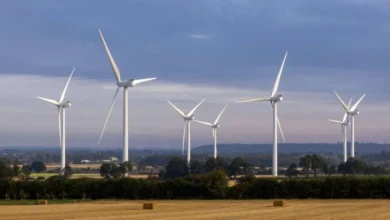Half of UK native plants in decline: Major study

Introduced species now make up the majority of plants growing in the wild in Britain, with more than half of natives estimated to be in decline, according to results of a 20-year study released Wednesday.
Change in land use, particularly “the intensification of arable cultivation,” has been the main driver of change, according to the “Plant Atlas 2020” study undertaken by the Botanical Society of Britain and Ireland (BSBI).
The 20-year project is the most comprehensive ever undertaken on UK wild flora, with volunteers submitting over 26 million records including 3,445 different species.
Those included 1,692 that are native to the UK and 1,753 non-natives that have been deliberately or accidentally introduced into the wild by humans, the study said.
“This startling finding means that there are now more introduced plants growing in the wild in Britain than natives, with many originating from gardens and then spreading to establish self-sustaining populations,” it added.
Comparison with similar studies from the 1950s showed that 53 percent of native plants species are estimated to have declined.
In contrast, 58 percent of recently introduced species are estimated to have increased.
The intensification of arable farming had led to the “substantial declines of many plants” associated with such crops, the report noted.
“Likewise, grassland and heathland plants that grow on infertile soils have suffered marked declines due to the conversion of their habitats to arable or more productive agricultural grasslands,” it said.
Drainage of wetland habitats has also had an impact while species growing around rivers and canals have also declined, mainly due to the effect of run-off from agricultural land.
“In comparison, the distributions of plants associated with woodlands have remained relatively unchanged,” while “species of coniferous woodland have increased due to the massive expansion of commercial forestry,” the report stated.
Some southern species have expanded their ranges northwards while some northern species have retreated at their southern limits, which correlates with “our warming climate.”
“The overall message is clear – our native flora is much diminished relative to the situation recorded by our predecessors in the 1950s,” the report’s authors warned.
“We need a holistic plan of action to reverse this decline so that our flora can be restored and flourish for the benefit of this and future generations.”
The National Farmers’ Union (NFU) environment forum chair Richard Bramley said farmers were “committed to enhancing and improving our landscapes.”
“In recent decades, farmers have made huge improvements in several areas that this report highlights. For example, more than 10,000 football pitches of habitat have been planted to benefit wildlife such as pollinators,” he added.










